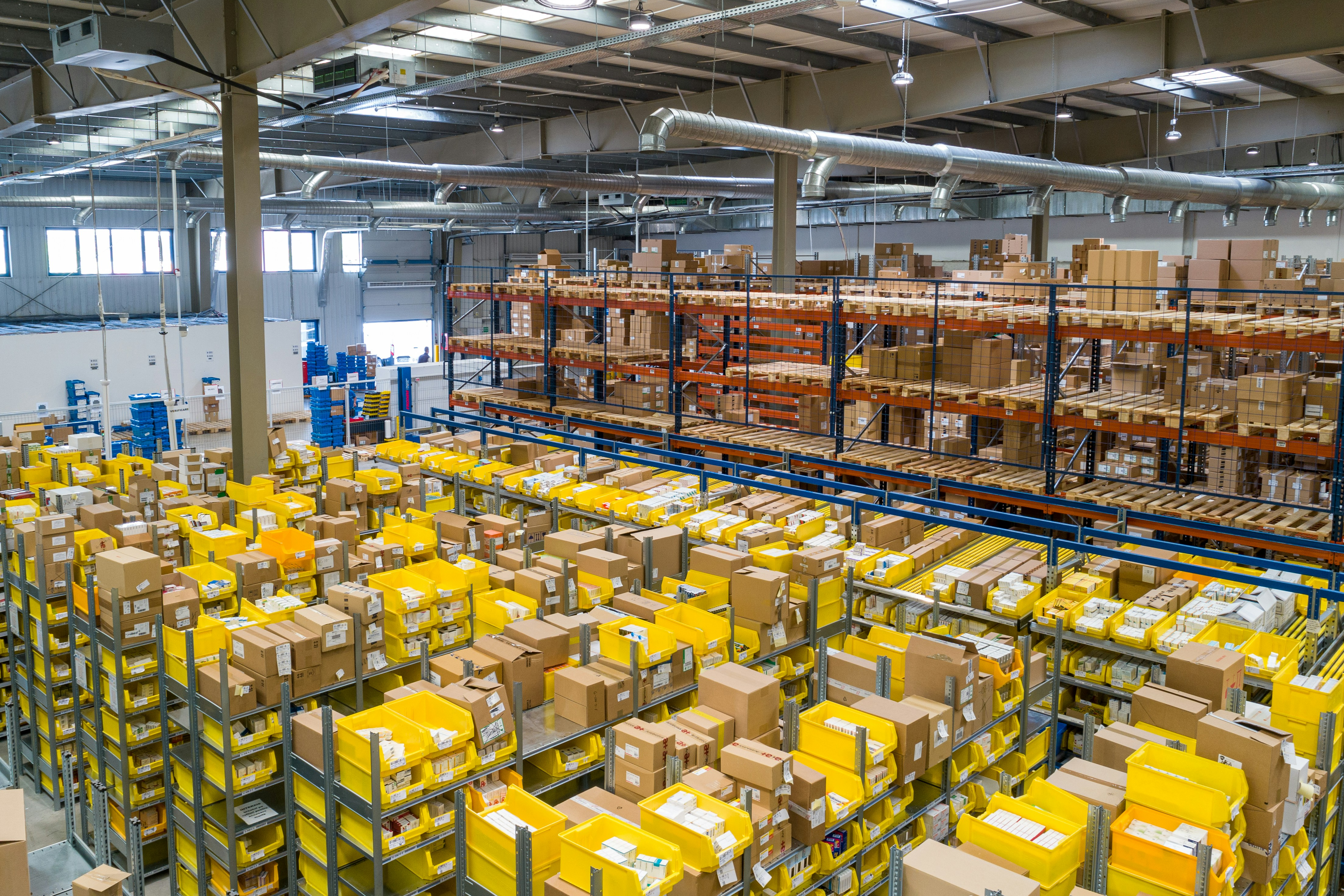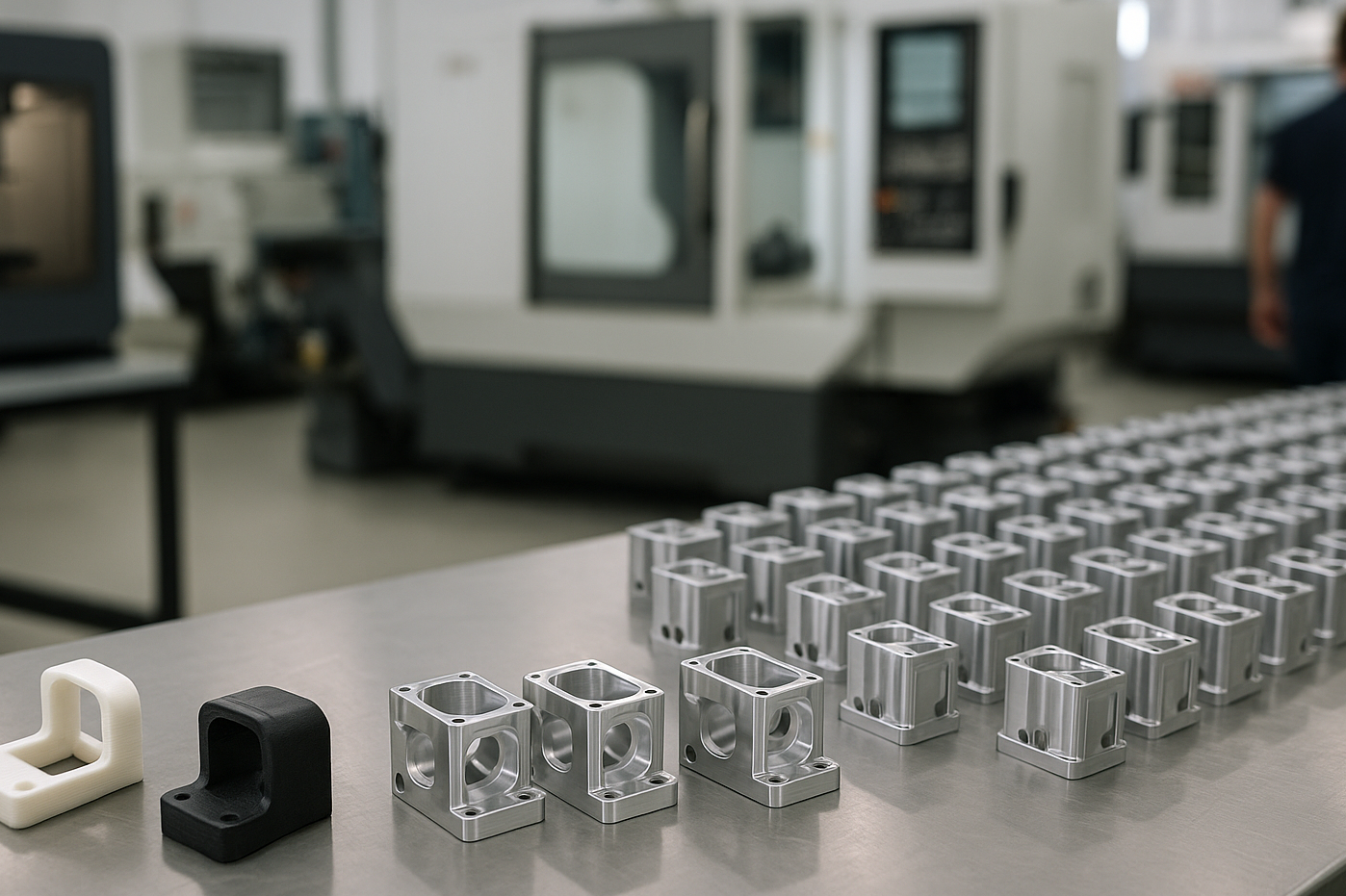
- Home
- About Us
-
Industries
-
Resources
- Contact Us
Avoiding Inventory Risk with Low-Volume Production
Published on: September 08, 2025
By: The Simple Machining Team
Startups and small manufacturers face a difficult balancing act: producing enough to meet demand without tying up cash in unsold inventory. Traditional manufacturing, optimized for large-scale runs, often amplifies that risk. Low-volume production offers a leaner, more flexible path forward. By aligning output with actual demand, companies can scale steadily while minimizing the burden of excess stock.
What Is Low-Volume Production?
Low-volume production means manufacturing smaller batches of parts or products, typically anywhere from a few dozen to a few thousand units. Unlike prototyping, which focuses on single parts for testing, low-volume runs deliver production-quality components in limited quantities. And unlike mass production, which demands expensive tooling and long lead times, low-volume manufacturing prioritizes speed and flexibility. For startups and SMBs facing uncertain demand, it provides a practical way to bring products to market without overcommitting.
Why Inventory Risk Is a Problem for Startups
For young companies, having excess inventory means tied-up capital. Every unsold unit represents money that could otherwise fuel marketing, product development, or operations. Without the cushion of large balance sheets, startups face serious consequences when inventory piles up:
Cash flow strain: Bulk manufacturing ties up resources that may take months to recover
Storage and logistics costs: Warehousing creates ongoing expenses, especially if products linger.
Obsolescence risk: Startups move quickly. Products risk becoming outdated before selling, leaving startups with sunk costs.
For many startups, these risks outweigh the per-unit savings promised by traditional large-batch production.
How Does Low-Volume Production Reduce Risk?
Low-volume production lowers exposure by matching manufacturing to actual demand. Rather than producing thousands of units upfront, companies can order smaller batches, gauge market response, and scale as needed. Key advantages include:
Flexibility to pivot: Customer feedback can drive design updates without wasting large amounts of stock.
Lower carrying costs: Warehousing, insurance, and logistics remain minimal with smaller inventories.
Capital efficiency: Cash stays available for growth priorities instead of sitting in unsold products.
Benefits of Low-Volume Production for SMBs
Incremental scaling:
Instead of gambling on a massive production run, companies can grow production in step with sales. This approach reduces financial exposure while ensuring supply always matches demand. For startups especially, incremental scaling provides the breathing room to refine operations, learn from the market, and gradually build toward higher volumes without overextending resources.
Lower entry barriers:
Traditional mass production often requires expensive molds, tooling, and large minimum order quantities, all of which can put new products out of reach for smaller teams. Low-volume runs remove those barriers by letting companies produce with flexible processes like CNC machining and 3D printing. That means a new idea can reach customers quickly without the heavy costs of committing to full-scale production from day one.
Learn about our additive services to help break down the barriers to entry.
Market validation:
Small batches allow businesses to test how customers respond before making a large financial commitment. Whether it’s gathering feedback on design features, pricing, or usability, this step helps refine products and reduce the chance of missteps. At Simple Machining, we often see customers run batch trials as a way to build confidence before investing in mass production, a strategy that saves both money and time.
Agility:
Market conditions can shift overnight, whether from seasonal demand, supply chain disruptions, or evolving customer preferences. With low-volume production, companies can adjust output quickly to meet those shifts. This prevents excess stock from piling up and keeps businesses responsive in dynamic markets, an advantage that large-scale, rigid production models can’t easily offer.
Talk to our team to learn how you can stay flexible with on-demand production.
Low-volume production goes beyond simply minimizing risk. It gives startups and SMBs the flexibility to grow sustainably, reach customers faster, and adapt as conditions change, all while keeping financial control firmly in hand.
The Role of On-Demand Manufacturing
On-demand manufacturing brings low-volume production within reach for startups and SMBs. Through digital platforms and distributed supplier networks, companies can order parts in small batches, only when needed, without locking into long-term contracts. Whether via CNC machining, additive manufacturing, or hybrid approaches, on-demand services provide the flexibility to manage inventory risk effectively.
This model aligns with lean startup principles: stay agile, conserve resources, and scale only when the market proves demand.
Why Partner with Simple Machining
Simple Machining is purpose-built for startups and SMBs that need to scale without unnecessary risk. Unlike generic machine shops or platforms, we focus on flexibility and agility in low-volume runs. Here’s what sets us apart:
- Process Breadth in One Partner: CNC machining, 3D printing, and hybrid approaches all under one roof eliminate the hassle of juggling multiple suppliers.
- Fast, Local Turnaround: With Bay Area 3D printing and machining capacity, we shorten lead times and even offer local pickup.
- Engineer-to-Engineer Support: Beyond instant quoting, our team provides practical design-for-manufacturing feedback to reduce errors and save costs.
- Agility Without Quality Compromise: We maintain production-grade tolerances and finishes, even at low volumes, ensuring early runs match final production standards.
- Transparent Pricing: Upfront, competitive pricing with no hidden costs.
- Bridge to Scale: From rapid prototyping to pilot production runs, we help you transition seamlessly toward mass production when the time is right.
By partnering with Simple Machining, you gain the agility to adapt, the speed to respond to market shifts, and the confidence to scale safely.
Conclusion
Inventory risk can derail even the most promising business. By adopting low-volume, on-demand production, startups and SMBs avoid locking up cash in unsold stock, stay responsive to market changes, and scale more safely. For teams navigating the uncertain early stages of growth, this approach offers a practical, risk-aware path forward.
Ready to explore low-volume production for your next project? Upload your CAD file today to compare options and get quotes for small-batch runs.
Disclaimer
The content appearing on this webpage is for informational purposes only. Simple Machining makes no representation or warranty of any kind, be it expressed or implied, as to the accuracy, completeness, or validity of the information. Any performance parameters, geometric tolerances, specific design features, quality and types of materials, or processes should not be inferred to represent what will be delivered by Simple Machining. Buyers seeking quotes for parts are responsible for defining the specific requirements for those parts. Please refer to our terms and conditions for more information.
Looking for more insights?
Sign up for the newsletter:
Scaling with On-Demand Manufacturing for Startups and SMBs
Read the Article 5 minute read
5 minute read
 September 15th
September 15th
Scaling Without Risk: On-Demand Manufacturing for Startups and SMBs
Read the Article 6 minute read
6 minute read
 August 25th
August 25th





